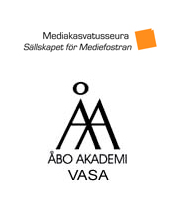Kirsi Pohjola from the University of Jyväskylä presented her fresh study on friendships with or without internet. We were the first ones to hear draft analysis of her qualitative research.
She has studied a small group of young men (aged 22) who have been friend from their early childhood. Nowadays they use an irc channel for communicating with each other. Or actually, the virtual communication is just an extention to the offline social life. That is what the boys say. They also say that their friendship would exixt even without cmc.
Pohjola had asked the boys about what is the difference between real and virtual worlds. She found out that for most of them, they are not two parallel worlds but one reality. In future, it will be even more difficult to tell what is the online reality and what is the offline reality. But is there really need to separate them from each other?
For most young people, internet is a tool for communicating with friends. Also Pohjola's "boys" seem to use the net for that. One of them had stated, "if the net is broken, you feel really lonely".

